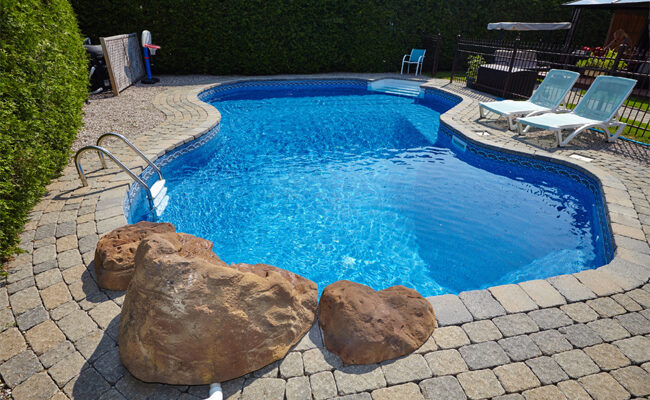
Having a pool in your backyard offers quite a bit of enjoyment for your family. Unfortunately, it can’t all be fun and games.
If you own a pool, ensuring it stays in good condition throughout the year is a must. The good news is, with a bit of time and effort, you can take care of your pool and ensure it always looks good.
Keep reading for some helpful pool maintenance tips that will ensure your pool is clean and problem-free now and in the future.
1. Skim and Scrub the Pool Regularly
Skimming the debris and leaves off the water’s surface is obvious. However, it’s a tip worth mentioning again.
If you want to keep your pool and water pristine, you should skim the surface daily. If you have the money, purchase a robot vacuum that will regularly clean the bottom of the pool.
Along with skimming the surface, you need to scrub the sides with the right pool cleaning products to prevent algae build-up.
You can scrub the pool one time per week. Look for any signs of growths to know when this is necessary. For stubborn areas that won’t go away, there are some DIY cleaning options.
2. Pool Filter System
Your pool’s pump will draw water and keep it circulating. The filter in the pump will clear away dirt and other contaminants from the water.
Both components protect your pool from issues. If your filter system is not functioning properly, your pool will likely become a polluted, cloudy mess you can’t swim in.
Based on your pool setup, you may have a diatomaceous earth filter, sand filter, or cartridge filter. If you have a saltwater system, then it will use a saltwater chlorinator.
3. Check and Maintain the Water Level
Water can be lost during swimming season because of evaporation and normal activities. When you remove debris using your skimmer each week, be sure to check the water level, too.
Make sure it does not fall under the skimmer level. If it does, the pump may be damaged. If the water levels are low, you can use your hose to refill it and ensure the levels are safe again.
If you decide to drain the pool after swimming season or for maintenance, make sure it doesn’t remain empty too long. It is best to keep water in the pool during winter because the water’s weight will counteract the ground’s force and keep the ground from pressing the pool up from underneath.
4. Use a Tennis Ball
While this may seem like an unusual pool maintenance trick, it works. With a tennis ball, you can help keep the water clean.
All you have to do is drop the ball in the pool and let it stay there for a bit. While in the water, the tennis ball can absorb oils that are left in the pool.
Some of the oils that may be in your pool include natural body oil, hair products, and suntan lotions. This trick ensures all these oils are absorbed by the tennis ball, leaving your pool’s water much cleaner.
5. Check the Pool’s Chemical Levels
The levels of chemicals in the pool are important to ensure it safe to swim in. If your water is not properly balanced, it will appear murky and irritate your eyes and skin. It can also cause your pool to begin growing bacteria.
It is a good idea to test your pool water one time per week. Some of the important chemical levels to check to include:
Calcium Hardness
Appropriate calcium levels will help prevent plaster damage. Try to ensure levels of 220 to 350. If your pools have vinyl sides, the levels should be lower.
Cyanuric Acid
This chemical helps protect chlorine from sunlight. It also determines the necessary Free Chlorine level. Good reading for an outside pool is between 30 and 50.
Total Alkalinity
The alkalinity will keep the pH in balance. An ideal level should be between 60 and 120.
Acidity or Alkalinity
This is also referred to as the pH level. The acidity should between 7.5 and 7.8. This is going to help prevent skin and eye irritation and protect your pool equipment from erosion.
Free Chlorine
This is a sanitizer. It helps to keep the pool water safe and free of potential germs.
6. Find and Fix Leaks
It is hard to figure out if lower than normal water levels are because of a leak or evaporation in some situations. You can find leaks by using the bucket test.
Fill a bucket 75% full of water. Inside the bucket, mark where the water line is.
Put the bucket in your pool and then market the water line outside the container. Keep it in the water for three days. If the water goes down outside the bucket, it means there is a leak.
Now You Know the Best Swimming Pool Maintenance Tips
You must invest in the right swimming pool maintenance to ensure your pool remains clean and works properly. The maintenance tips above will help you get started.
You can also hire a third-party pool cleaning service if you don’t think you can handle the job yourself. This will ensure your pool remains clean and ready to swim in.
Are you searching for more information and tips on how to maintain your home? If so, you can check out some of our other blogs. We offer information on everything from bathroom and garden to interior design, kitchen, furniture, and more.
Leave a Reply